Give Me the Ingredients and I’ll Give You the Salad:
Ryan Gander Interviewed by Alex Coles
Alex Coles: Was the exhibition with Michael Marriott at the Russian Club [Ernö Goldfinger v Groucho Marx, 2011] your first approach to Goldfinger’s Willow Road in terms of making an actual installation premised on your response to the house?
Ryan Gander: The first time my interest in Goldfinger made its way into a work was in the form of postcard I did in 2005 [Of Any Actual Person Living Or Dead (collaboration with Aurélien Froment), 2005]. When I was writing the children’s book [The Boy Who Always Looked Up, 2003], largely based on Goldfinger’s Trellick Tower [1972], I visited Willow Road. Although the tower was interesting because it was a failure, I found Willow Road much more engaging because it helps you to understand the multiplicity of his thinking as an architect. The light switches, the bannister, the post box – everything is carefully thought out.
AC: Trellick Tower and Willow Road are opposites: one is a private commission for a middle class client and full of subtle details, while the other is a public housing project with a brutal sense of order and anonymity. I guess the tower is much more widely known precisely because of its negative impact, but as a design the house is certainly the more interesting of the two.
RG: When the National Trust approached me to do something at Willow Road - they’d read my children’s story and seen the show with Michael - it seemed like a brilliant way to extend a line of enquiry that had begun a decade ago. The way I’ve approached this project is to try and consider how, if he were alive, Goldfinger would approach the house’s design. To help articulate this I’ve introduced a series of different things into the house. When the viewer enters the building they won’t necessarily notice my interventions...
AC: Where have you taken the cue for each of the works? Is it from the house itself or from things that Goldfinger mentioned about it in interviews?
RG: Both. What I’ve attempted to do is respond to his sensibility, and listening to a lot of archive interviews with the various people who knew Goldfinger helped. To give you an example, in Willow Road there’s a raised stage on the first floor with a plan chest built into it and concertinaing doors to allow more light and space. Both were designed around Goldfinger’s wife, Ursula Blackwell, being a painter. Goldfinger realised all of these details with the perfect economy of forms. Throughout, I’ve responded to the little tricks and devices Goldfinger uses, but I’ve responded to them by making a series of artworks that are positioned in the house as if they’ve always been there.
AC: To just jump back to the exhibition with Michael for a moment: one of your pieces in the exhibition was based on a Surrealist mood board and the other was a script, right?
RG: It was a transcript of one of my loose association lectures that mentioned Goldfinger, [Karl] Marx and Michael.
AC: So where the exhibition at the Russian Club was more of an obtuse take on Willow Road, the present show…
RG: …is more immersive.
AC: But it’s immersive in a very particular way. I’m interested in what happens if the visitor to the exhibition doesn’t pick up the information sheet with the details of your intervention and just experiences the house. Would they necessarily notice your intervention?
RG: Probably not, and I quite like that. I think of the works in the show as off-cuts that, in some sort of parallel reality, could exist as part of the fabric of Willow Road. Each of the works takes a different position. There’s works like the moneybox [Anyone with a family is motived by money, 2014] – that’s based on the chairs and tables Goldfinger’s daughter, Elizabeth, made from slotted together sections of wood. The moneybox is made from laser cut plywood – you just push the pieces out of the sheet and slot them together to create your moneybox. Then there’s works like [Your nostalgia, 2014], which consists of a pair of Nike Air Max trainers cast in bronze, left by the door. This refers to the way I, as an artist am a guest in the house of someone I admire – hence why I take my shoes off. And then there’s works like [Things just happen to me, 2014], a chess set made by reinterpreting parts from a Bedford van. This was based on my Dad’s description of the parts he’d encountered when he worked for Vauxhall in Ellesmere Port in the 1970s. A kind of accidental aesthetic enters the work here because the components are a result of what my Dad said and the default forms are based on those in a Vauxhall Bedford van from decades ago. This notion of accident finds a parallel of sorts in the works of Goldfinger’s neighbour in Hampstead - the Surrealist Max Ernst. I listened to an interview with one of Goldfinger’s friends in which he speaks of how Ursula and Goldfinger used to have dinner parties that Ernst would attend. He talks of how Ursula used to make the same dish each time: to eat, a Russian black bread with caviar, and to drink, a dark tea with black rum in it [both laugh]. So one of the works is called Situational displays: a dish for a dish with Phil Mayer [2014], which is an update of her dish and drink: molasses tea loaf with red caviar and a rum and ginger based cocktail. These are served in ceramic vessels designed and fabricated by Phil [Mayer] from my studio. In a way, the whole history of the house is woven into this work – it’s a sort of allegory of the creative act.
AC: Can you tell me more about the work The way things collide (Phaidon book meets inner sole) [2012]?
RG: Its one of a series of ‘collisions’ where I take two objects that aren’t ordinarily associated and put them together: it could be a USM cabinet and a used condom or a Martino Gamper stool and a macaron. The one that you’re referring to I thought would work well in Goldfinger’s studio, which also contains his library. It’s carved from an intensely dark oak, which gives it a sort of musty tobacco look, like it’s been there for years. I liked the idea that this atlas of architecture has all of these iconic houses in it. When Willow Road was built the atlas was not yet published, hence an antiquated version of it in wood. The other component of the work is a carving of a sweaty used inner sole that has been placed beside the book - by comparison with the formal context of the atlas, a more domestic gesture.
AC: Can you also tell me about the three lamp works in the exhibition?
RG: The first is a lamp that replaces Goldfinger’s original, and clamps onto a shelf in his studio [A lamp made by the artist for his wife (twenty ninth attempt, 2014]; the second is in the hallway [A lamp made by the artist for his wife (twentieth attempt, 2013]; and I haven’t quite decided where the third one [A lamp made by the artist for his wife (eighteenth attempt, 2013] will go yet. When you look at each one you initially think, “Oh, it’s a lamp.” but then you look again and notice that it’s made out of a paper towel holder and a bit of gaffer tape – not things that you’d associate with professionally made lamps.
AC: What about the video work [A flawed and wounded man bleeding frames onto a page, 2014]?
RG: Its based on my story The Boy Who Always Looked Up. I went to a place that does sound effects for films and cartoons and asked a voiceover artist to read the book in a Jackanory style, whilst at the same time two people provided sound effects. Usually sound effects are pre-recorded but I wanted something more like the Goon Show, so I asked them to perform live with the narrator. The video consists of the reading of the story with the sound effects in one-take - accidents and mistakes retained. Here, it was the space between the visible and the invisible or the audible and the inaudible that interested me. The video will be on constant loop on the old fashioned tube TV in the lounge of Willow Road.
AC: In terms of the trajectory of your thinking about Goldfinger within the broader context of your practice, what is the status of the present exhibition for you?
RG: The exhibition feeds into another, much larger, project that I’m just starting on. This future project consists of a series of show houses that are designed for creative types: one for an artist, one for a musician and one for an illustrator. From the front they’ll just look like a row of identical cottages, but from the back and above each one is totally different as they are tailored to each of their projected inhabitants. Like Goldfinger’s Willow Road, every fitting and fixture will be bespoke. In this sense The artists have the keys is a crucial stepping-stone in my work.
A_flawed_and_wounded_man_bleeding_frames_onto_a_page_Ryan_Gander_2014_1.jpg
Download (634kB) | Preview
A_lamp_made_by_the_artist_for_his_wife_(Eighteenth_attempt)_Ryan_Gander_2013_1.jpg
Download (298kB) | Preview
A_lamp_made_by_the_artist_for_his_wife_(Twentieth_attempt)_Ryan_Gander_2014_1.jpg
Download (453kB) | Preview
Anyone_with_a_family_is_motivated_by_money_Ryan_Gander_2014_1.jpg
Download (543kB) | Preview
Installation_View_Willow_Road_Ryan_Gander_2014_1.jpg
Download (666kB) | Preview
Installation_View_Willow_Road_Ryan_Gander_2014_3.jpg
Download (341kB) | Preview
Situational_displays_ÔÇô_a_dish_for_a_dish_with_Phil_Mayer_Ryan_Gander_2014_4.jpg
Download (549kB) | Preview
Things_just_happen_to_me_Ryan_Gander_2014_3.jpg
Download (612kB) | Preview
Your_nostalgia_Ryan_Gander_2014_2.jpg
Download (721kB) | Preview
Downloads
Downloads per month over past year
Downloads per month over past year for
"A_flawed_and_wounded_man_bleeding_frames_onto_a_page_Ryan_Gander_2014_1.jpg"
Downloads per month over past year for
"A_lamp_made_by_the_artist_for_his_wife_(Eighteenth_attempt)_Ryan_Gander_2013_1.jpg"
Downloads per month over past year for
"A_lamp_made_by_the_artist_for_his_wife_(Twentieth_attempt)_Ryan_Gander_2014_1.jpg"
Downloads per month over past year for
"Anyone_with_a_family_is_motivated_by_money_Ryan_Gander_2014_1.jpg"
Downloads per month over past year for
"Installation_View_Willow_Road_Ryan_Gander_2014_1.jpg"
Downloads per month over past year for
"Installation_View_Willow_Road_Ryan_Gander_2014_3.jpg"
Downloads per month over past year for
"Situational_displays_ÔÇô_a_dish_for_a_dish_with_Phil_Mayer_Ryan_Gander_2014_4.jpg"
Downloads per month over past year for
"Things_just_happen_to_me_Ryan_Gander_2014_3.jpg"
Downloads per month over past year for
"Your_nostalgia_Ryan_Gander_2014_2.jpg"

![A flawed and wounded man bleeding frames onto a page. Ryan Gander. Image Credit: Ken Adlard [thumbnail of A flawed and wounded man bleeding frames onto a page. Ryan Gander. Image Credit: Ken Adlard]](https://eprints.hud.ac.uk/20091/1.hassmallThumbnailVersion/A_flawed_and_wounded_man_bleeding_frames_onto_a_page_Ryan_Gander_2014_1.jpg)

![A lamp made by the artist for his wife (Eighteenth attempt). Ryan Gander. Image Credit: Ken Adlard [thumbnail of A lamp made by the artist for his wife (Eighteenth attempt). Ryan Gander. Image Credit: Ken Adlard]](https://eprints.hud.ac.uk/20091/2.hassmallThumbnailVersion/A_lamp_made_by_the_artist_for_his_wife_%28Eighteenth_attempt%29_Ryan_Gander_2013_1.jpg)
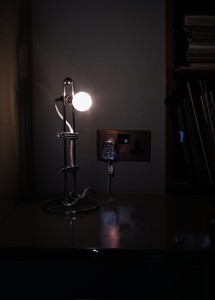
![A lamp made by the artist for his wife (Twentieth attempt). Ryan Gander. Image Credit: Ken Adlard [thumbnail of A lamp made by the artist for his wife (Twentieth attempt). Ryan Gander. Image Credit: Ken Adlard]](https://eprints.hud.ac.uk/20091/3.hassmallThumbnailVersion/A_lamp_made_by_the_artist_for_his_wife_%28Twentieth_attempt%29_Ryan_Gander_2014_1.jpg)
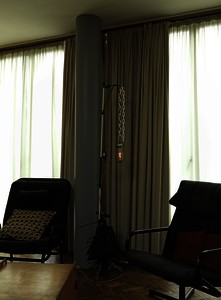
![Anyone with a family is motivated by money. Ryan Gander. Image Credit: Ken Adlard [thumbnail of Anyone with a family is motivated by money. Ryan Gander. Image Credit: Ken Adlard]](https://eprints.hud.ac.uk/20091/4.hassmallThumbnailVersion/Anyone_with_a_family_is_motivated_by_money_Ryan_Gander_2014_1.jpg)

![Installation View Willow Road. Ryan Gander. Image Credit: Ken Adlard [thumbnail of Installation View Willow Road. Ryan Gander. Image Credit: Ken Adlard]](https://eprints.hud.ac.uk/20091/5.hassmallThumbnailVersion/Installation_View_Willow_Road_Ryan_Gander_2014_1.jpg)

![Installation View Willow Road. Ryan Gander. Image Credit: Ken Adlard [thumbnail of Installation View Willow Road. Ryan Gander. Image Credit: Ken Adlard]](https://eprints.hud.ac.uk/20091/6.hassmallThumbnailVersion/Installation_View_Willow_Road_Ryan_Gander_2014_3.jpg)
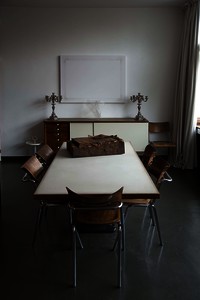
![Situational Displays, a dish for a dish with Phil Mayer. Ryan Gander. Image Credit: Ken Adlard [thumbnail of Situational Displays, a dish for a dish with Phil Mayer. Ryan Gander. Image Credit: Ken Adlard]](https://eprints.hud.ac.uk/20091/7.hassmallThumbnailVersion/Situational_displays_%C3%94%C3%87%C3%B4_a_dish_for_a_dish_with_Phil_Mayer_Ryan_Gander_2014_4.jpg)
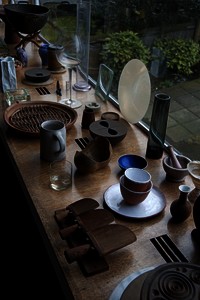
![Things just happen to me. Ryan Gander. Image Credit: Ken Adlard [thumbnail of Things just happen to me. Ryan Gander. Image Credit: Ken Adlard]](https://eprints.hud.ac.uk/20091/8.hassmallThumbnailVersion/Things_just_happen_to_me_Ryan_Gander_2014_3.jpg)
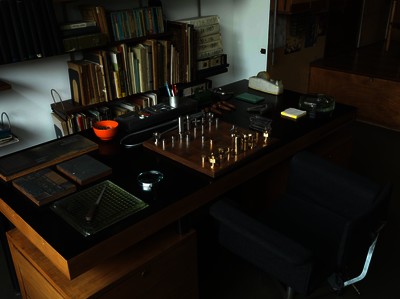
![Your nostalgia. Ryan Gander. Image Credit: Ken Adlard [thumbnail of Your nostalgia. Ryan Gander. Image Credit: Ken Adlard]](https://eprints.hud.ac.uk/20091/9.hassmallThumbnailVersion/Your_nostalgia_Ryan_Gander_2014_2.jpg)
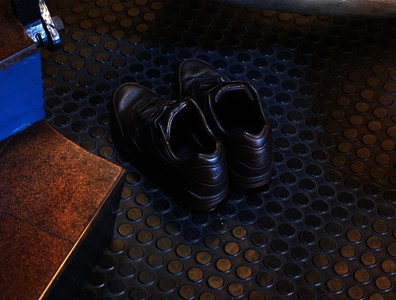
 CORE (COnnecting REpositories)
CORE (COnnecting REpositories) CORE (COnnecting REpositories)
CORE (COnnecting REpositories)